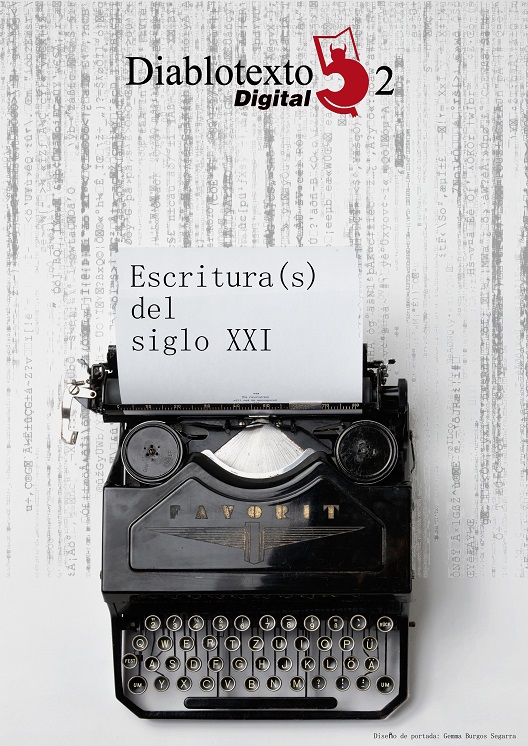Free Culture or Authors’ rights. An unnecessary dilema in the 21st century?
DOI:
https://doi.org/10.7203/diablotexto.2.10035Keywords:
Creative Commons, Copyright, Free Culture, Authors’ rights, Public domain Abstract
Abstract
The present study will deal with the concepts of Authors’ rights and Free Culture, the importance of intellectual property and its commercialization. In this way, we will observe how these authors’ rights have become part of a tangle of laws, having lost the author himself his right to the work and passing this on to a third party. With the help of the idea proposed by Lawrence Lessig in his book «Free Culture: How Big Media Uses Technology and Law to Lock Down Culture and Control Creativity», we will expose ho there is a tension between the interests behind intellectual property.
 Downloads
Downloads
 References
References
BARROS, Lydia (2016). “Inclusión del tecnobrega en los nuevos procesos de circulación cultural”. En Rosana Martins, Heloisa Buarque de Hollanda y Rodrigo Saturnino (eds.) Miradas Periféricas. Las nuevas epistemologías de la comunicación en Brasil y en Portugal. Bellaterra: Institut de la Comunicació, Universitat autónoma de Barcelona, pp. 165-186.
BUSANICHE, Beatriz (2012). “¿Por qué no hablamos de propiedad intelectual?”, Arte y cultura en circulación. Introducción al derecho de autor y las licencias libres. Argentina: Ártica Ediciones, pp.14-29.
CHIKWENDU, Madu (2007). “El fenómeno de Nollywood”, Revista de la OMPI, nº 3. Ginebra, pp. 8-9.
GOLDSTEIN, Paul [1994] (1999). El copyright en la sociedad de la información. Traducción de M.ª Luisa Llobregat Hurtado. Alicante: Publicaciones Universidad de Alicante.
LESSIG, Lawrence [2004] (2005). Por una cultura libre. Cómo los grandes grupos de comunicación utilizan la tecnología y la ley para clausurar la cultura y controlar la creatividad. Traducción de Antonio Córdoba. Madrid: Traficantes de Sueños.
NANCLARES ESCUDERO, Silvia (2013). “Cultura Libre Editorial, ¿modelos sostenibles?”, Teknokultura. Revista de Cultura Digital y Movimientos Sociales, vol. 10, n.º 1, pp. 253-264.
MARTÍNEZ SANMARTÍ, Roger (2012). Cultura i mercat. Barcelona: Editorial UOC.
MATA Y MARTÍN, Ricardo (2011). La propiedad intelectual en la Era Digital. Límites e infracciones a los derechos de autor en Internet. Madrid: La Ley.
OYEWOLE, Sandra (2014). “Una ojeada a la industria cinematográfica nigeriana”, Revista de la OMPI, nº 2. Ginebra, pp. 2-6.
PAGOLA, Lila (2012). “Licencias libres como alternativa al copyright”. En Arte y cultura en circulación. Introducción al derecho de autor y las licencias libres. Argentina: Ártica Ediciones, pp. 30-37.
PEREZ DE ONTIVEROS BAQUERO, Carmen (1993). Derecho de autor: la facultad de decidir la divulgación. Madrid: Editorial Civitas, S.A.
RAGEL SÁNCHEZ, Luis Felipe (2005). “La propiedad intelectual como propiedad temporal”. En Carlos Rogel Vide (coord.), La duración de la propiedad intelectual y las obras en dominio público. Madrid: Editorial Reus S.A., Colección de Propiedad Intelectual, pp. 17-32.
RODRÍGUEZ, Emmanuel (2006). “El copyleft en el ámbito de la edición”. En Copyleft. Manual de uso. Madrid: Traficantes de Sueños, pp. 57-76.
SÁDABA, Igor (2008). Propiedad intelectual ¿Bienes públicos o mercancías privadas? Madrid: Los libros de la Catarata.
SMIERS, Joost (2006). Un mundo sin copyright. Artes y medios en la globalización. Traducción de Julieta Barba y Silvia Jawerbaum. Barcelona: Editorial Gedisa, Serie Cultura.
Documental: Good copy, bad copy. https://www.youtube.com/watch?v=ZKiLI7XFB9k [Fecha de consulta: 1 septiembre de 2016].
Downloads
Additional Files
Published
How to Cite
-
Abstract1467
-
PDF (Español)700
-
Datos personales (Español)1
Issue
Section
License
Licencia de reconocimiento de Creative Commons “Reconocimiento - No Comercia l- Sin Obra Derivada
Authors who publish with this journal agree to the following items:
The authors will keep their copyright and guarantee the journal the right of first publication of their work, which will be simultaneously subject to the Creative Commons license that allows third parties to share the work indicating its author and its first publication in the journal. The authors may adopt other non-exclusive license agreements to distribute the version of the published work (e.g., depositing it in an institutional telematic file or publishing it in a monographic volume), with an acknowledgment of its initial publication in this journal. The authors are allowed and encouraged to disseminate their work through the Internet (e.g., in institutional telematic archives or on their website) before and during the submission process, which can produce interesting exchanges and increase citations of the published work. (See Effect of Open Access)




